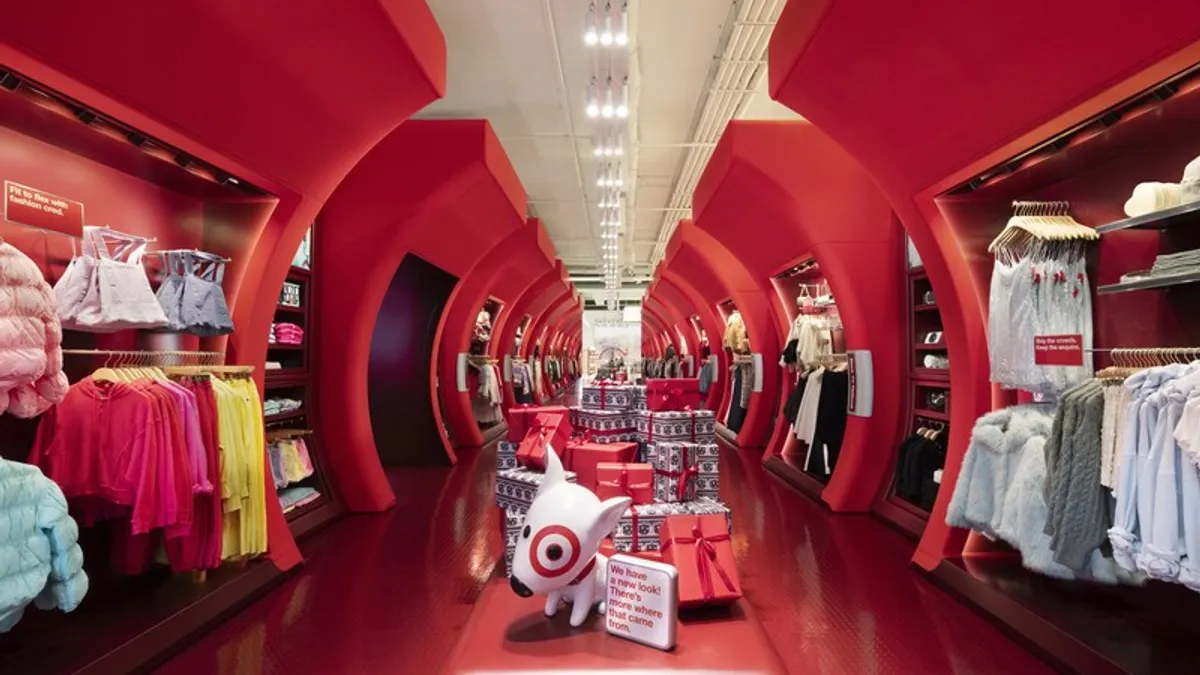Editor's note: The following is a guest post from Lee Peterson, executive vice president of Brand, Strategy & Design at WD Partners.
Your stores survived 2017. Congratulations are in order. But don't get too comfortable; the carnage is far from over.
Investors are still dumping retail stocks and store closings and bankruptcies continue at a record pace. This year might very well go down as one of the worst for the existing retail industry ever. Until 2018, that is. If you're asking yourself, "Are we right-sized yet?" The answer is: Probably not.
So which retailers will be left standing?
We can say confidently that only those retailers embracing at least two of the three fundamental consumer driven strategies in our industry will be around much longer — discount (D), convenience (C), and third wave (TW).
By discount we don't mean couponing, by convenience we don't mean simply home delivery and by third wave, we don't mean cool environments alone. This is not a time for half measures but wholehearted commitments. According to the consumers we talked to, brands with physical assets left standing had better be embracing at least two of these three philosophies, and one of them now has to be C.
If you think about it, Amazon is now doing all three, but that's another story.
It's time for an unsentimental, eyes-wide-open alignment. Below, we define the three key survival strategies, exploring how each one plays out for specific categories and brands, and finally, detail which retail brands are embracing each of them best.
Discount
Who?
There are, of course, the usual suspects: Dollar stores (Dollar General, Family Dollar, and Dollar Tree); discounters (Big Lots, TJ Maxx, Aldi); mass-market big box retailers (Walmart, Target), and yes, some convenience stores (7-Eleven). But there are other retail brands banking big on this survival tactic — the Forever 21's and H&M's of the world, for example.
And while you would never accuse Nordstrom of embracing a discount strategy, what would you call Nordstrom Rack? You can also include every specialty brand in America that has opened hundreds of stores in outlet malls over the last decade. As a hedge against revenue losses, many retail brands have moved down the price continuum to increase their customer base.
Why?
"Discount" isn't just a definition, or a tactic. We see discount as a strategy serving two very real needs: one, the American consumer's psychic desire for a good deal; and two, the needs of a growing consumer segment of the U.S. population losing economic ground as real wages stagnate, decreasing buying power.
As recently noted in a study published in the Harvard Business Review, how customers perceive price is as important as price itself. That's one reason why as a strategy, discount encompasses far more than the traditional retail "discounters" within the industry, and means much more than simple, 101 tactics like sales and digital couponing, or even outlets. The emergence of this direction is driven by an unavoidable truth: Not counting the 1% on top of the American consumer pyramid, there's nothing that is more important to shoppers than price. That's not going to change any time soon — and by some measures, consumer price sensitivity is only getting worse.
Case in point: Whole Foods. It arguably wouldn't have been such a vulnerable target for Amazon if it had aggressively pursued a more price-centric strategy years ago. Yes, they've made being a third wave pioneer a primary survival strategy but they waited too long to do convenience, and even longer to do discount. Amazon obviously gets discount. So on day one, they had Whole Foods begin to embrace two of the three key strategies vs only one, with price cuts up to 43% on certain items. In doing that, they immediately signaled to shoppers that the days of Whole Paycheck were over.
Who is doing it best?
Walmart. The choice was made long ago: Everyday low pricing. Walmart has this strategy down better than anyone else. Dollar stores also pull it off well by selling smaller package sizes in very basic environments. But dollar stores are not for everyone, and to the consumers we talked to, Walmart is.
Convenience
Who?
Amazon changed retail forever with this strategy. Press a 'buy now' button and packages magically appear on your porch within hours. No retailer to date has been able to match the mastery of convenience the way Amazon has.
Walmart, wisely realizing the need to play in two of our outlined strategies, is starting to flank the e-commerce giant on the convenience front with excellent e-commerce, next day shipping and buy online/pickup in store. But they have a long way to go to catch up. Other, smaller, third wave retailers, like Warby Parker and Stitch Fix compete in convenience, but obviously on a much different level.
Why do it?
This is the survival strategy that everyone must make a priority in 2018. It's table stakes.
Sure, it's mostly tactical, but every retailer has to get ready for a full-on, no-holds barred bear hug of C. There is no choice anymore. Convenience as a survival strategy includes excellent, free shipping, BOPIS, home delivery, showroom (smaller) stores, lockers, pop ups and more. All the tiny (and big) fundamentals that make e-commerce more convenient need to be brought to life physically.
E-commerce has shifted consumer expectations for good. There's no going back. So, to embrace convenience as a strategy, we have to first understand it as something far more abstract: Every possible thing you can do to make shopping your brand anywhere as convenient and frictionless for consumers as possible.
This is how every brand will live and die today, making it the 2020 catch-all strategy for any retailer who wants to survive the carnage. We've had discount and third wave operating as survival strategies for some time, but it has been over the last five years that convenience as a strategy has surfaced as the non-negotiable of doing business for anyone and everyone.
To say nothing of the fact that it's the best way to neutralize the destructive force of the Amazon's gorilla. Face it — you now have no choice but to invest in immersive convenience.
Who is doing it best?
Amazon: You know this.
Walmart: Surprise! To the consumers we talked to, Walmart is the brand worth emulating in this category as well.
They have embraced convenience with gusto, and are out-innovating every other mass-market and even specialty retail chain. In only the last month, they've launched a rash of new initiatives and acquisitions: testing a grocery delivery program in Silicon Valley, one that uses smart-home technology allowing shoppers to remotely open their homes to delivery workers.
They are also kicking off a home grocery delivery partnership with Uber in two new markets, Dallas and Orlando. But their purchase of Jet.com and upstart third waver Bonobos takes the cake, upping their e-commerce business by 63%. Of all retailers, only Walmart understands the three pronged consumer battle plan as well as Amazon. So far.
Third wave
Who?
If you live in a thriving urban neighborhood, you know plenty of one-off coffee shops and independent bookstores pulling this off; survival by quality, great environment, newness and spot on service. Scale is and might always be the challenge with a third wave strategy, but do consumers care? Not really.
The idea of being third wave-like is embraced by a growing number of national and even global retailers. Urban Outfitters gets it. Starbucks gets it, too. Whole Foods always has. Victoria's Secret has always lived on the edge of this strategy (think of the original shops in San Francisco). Nordstrom, one can argue, is moving itself to the edge of third wave by opening a concept store with no inventory.
To a certain extent, Walmart is also edging close to third wave, especially with its purchase of Bonobos and Modcloth, though it's a long way from bringing third wave to bear on its supercenter footprint (so far). Think of the new players too, like Warby Parker, and Shinola, along with the 'classic' player in this category, Apple. Most specialty retailers, however, are failing left and right at TW when they should be leading this strategy tip. We expect this to change.
Why do it?
For specialty retailers, moving towards being more third wave is a no-brainer. It's the only strategy that retailers can still do better than Amazon, the last bastion for sure-fire investments with a shot at preserving margins.
Consumers are saying it's time for specialty to start acting more like they did during the category's inception: be entrepreneurial, invest in your people, create exciting experiences inside the store, and work hard at quality and being a part of a customer's identity and lifestyle. This is not to say that being third wave will relieve your sense of duty towards convenience. On the contrary, if you think of the newer retailers mentioned above, they were begat by the convenience strategy and migrated to third wave when they got physical.
Who is doing it best?
Urban Outfitters Brands: Pizza shops, space concepts, Free People, vinyl sections, reclaimed spaces — Urban Brands has always been a leader in third wave. They understand the customer, especially in the physical space. Where they've lagged, though, has been in embracing the convenience factor. We expect them to upgrade in this area, though, as their customer gives them plenty of permission to do so. They just need to execute.
REI: Get outside! With fewer, better physical spaces and plenty of moxie and customer synergy, this third wave brand will survive. Improving their C factor will be a key to their growth as well.
Keep standing tall in 2018
Figure out your primary survival strategy. Is it discount and convenience, third wave and convenience, or all three?
In any case, it's paramount that you commit to two out of three. Because if you aren't doing convenience, there is no tomorrow.
Half measures simply aren't an option anymore. The e-commerce pressures, the disruption, the store-closing carnage — all of it isn't going to stop without a clear vision. Live and breathe your survival strategy within your brand positioning. And go further: Start doing things better than anyone else in your category. Re-ignite that competitive fire and don't lose sight of it again.





















